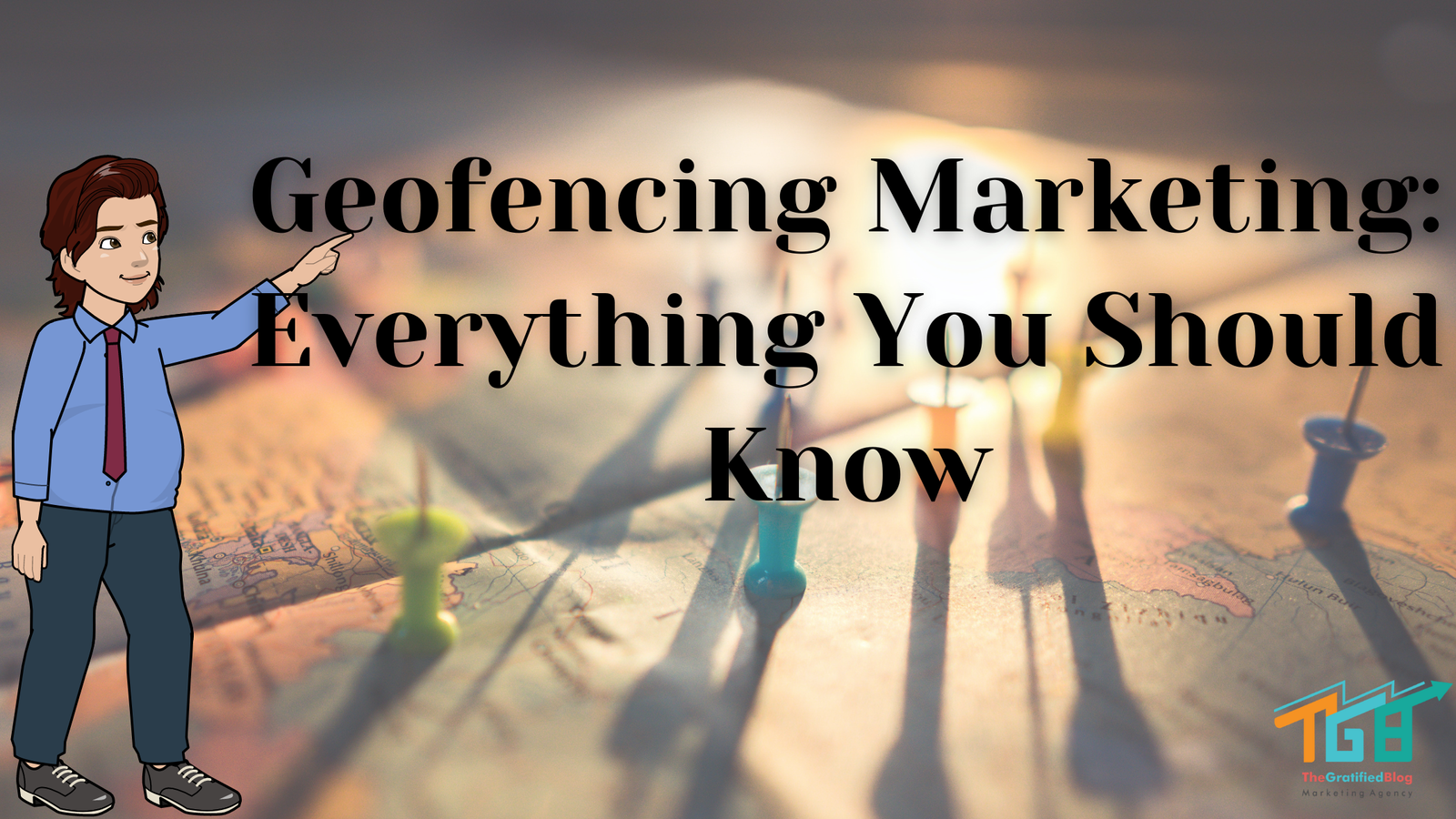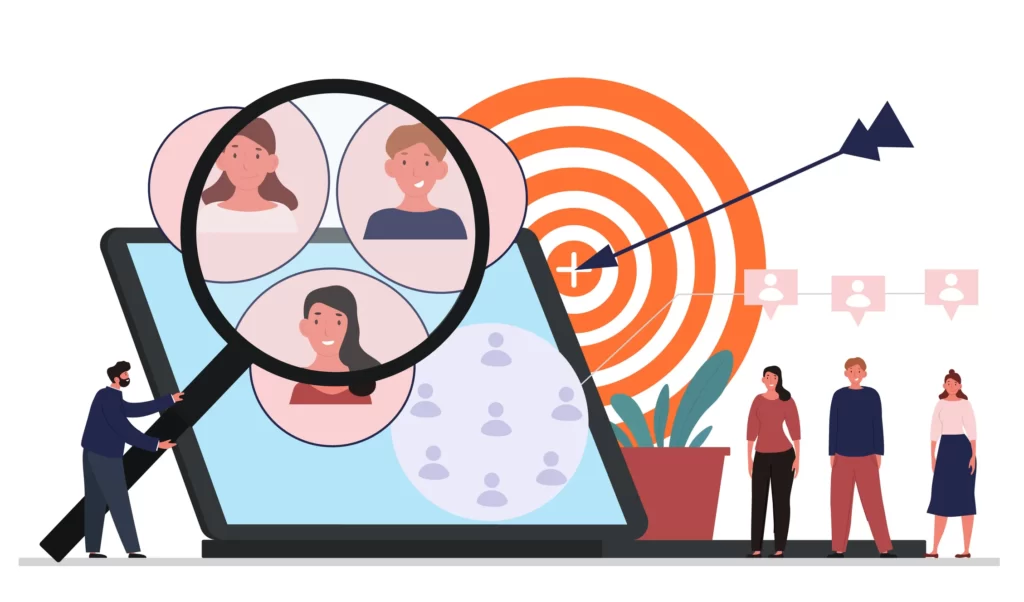
what is geofencing marketing ? Have you ever dreamt of turning on your TV to find tailored commercials for your business?
Or strolling down the street and being pleasantly surprised by posters or banners adorned with your company’s logo?
Well, your dreams can become a reality with the power of geofencing marketing.
This innovative approach allows businesses to precisely target their desired audience based on their location, ensuring that your brand message reaches the right people at the right time.
With a geofencing marketing company by your side, you can unlock the potential of localized advertising and maximize your business’s impact.
Although, it can make that happen. With this powerful tool, businesses can target specific geographic areas with tailored content and advertising. And the great news is that Geofencing marketing is a scalable strategy.
Just as, it’s perfect for small businesses just starting and larger enterprises. To find out more about this exciting form of marketing, read on!
How Geofencing Marketing Works?
Geofencing for marketing, a powerful technique that leverages GPS or Radio Frequency Identification (RFID), enables businesses to automatically trigger a pre-set response when individuals enter or exit a specific Geofence.
This innovative approach allows for seamless integration of location-based targeting. An excellent illustration of it in action would be sending out enticing discount coupons to those who step into your Geofence.
Source: Youtube
What Are The Benefits Of Geofencing Marketing?
There are many benefits of Geofencing marketing, including:
- Reach New Customers:
Reach new customers: Geofencing allows businesses to target potential customers within a specific geographical area.
By setting up virtual boundaries around locations of interest, such as shopping malls, event venues, or competitors’ locations
Businesses can send targeted advertisements or promotional offers to people who are physically present in those areas.
This helps expand the reach of marketing efforts and connect with new customers.

Source:adcumulus.com
- Improve Customer Engagement:
Geofencing enables businesses to deliver personalized and timely messages to customers based on their location.
By sending relevant offers or notifications when customers enter a specific area, businesses can increase customer engagement.
For example, a retail store can send a discount coupon to a customer who walks by their store, encouraging them to visit and make a purchase.

Source: leadsquared.com
- Target Specific Areas:
Geofencing allows businesses to focus their marketing efforts on specific geographic locations.
This level of precision helps in targeting areas where the business’s target audience resides or where there is a high concentration of potential customers.
It enables businesses to tailor their marketing messages and offers to suit the preferences and needs of customers in those particular areas.

Source: marketingevolution.com
- Generate leads:
Geofencing can be used to capture leads and drive customer actions.
By deploying geofences around events, trade shows, or specific locations related to the business’s industry, companies can collect information from individuals who enter those boundaries.
This information can then be used to follow up with potential leads, nurture them, and convert them into customers.

Source: netplanetdigital.com.au
- Increase Brand Awareness:
Geofencing marketing can be effective in increasing brand awareness.
By consistently targeting potential customers in specific areas, businesses can create repeated exposures to their brand.
This can help increase brand recognition, build trust, and establish a strong presence in the minds of consumers in those locations.

Source: bsquared.media
Overall, geofencing marketing offers businesses the ability to reach new customers, engage with them on a personal level, target specific areas, generate leads, and increase brand awareness.
By leveraging location-based technology, businesses can enhance their marketing strategies and improve their overall success in today’s competitive market.
What Are The Geofencing Types?
There are two main types of Geofencing:
- Static Geofencing
Static geofencing is a type of geofencing that uses a fixed location to trigger a response.
It is a virtually created geographical boundary that triggers actions for use cases such as marketing and advertising, fleet management, etc..
It is a location-based technology service in which an app or other software program uses GPS, RFID,
Wi-Fi, or cellular data to trigger a pre-programmed action when a mobile device or RFID tag enters or exits a virtual boundary set up around a geographical location
Known as a geofence. Static geofencing can be used to send a discount coupon to everyone who enters your geofence.
- Dynamic Geofencing
Dynamic Geofencing is a type of geofencing that uses a moving location to trigger a response. For example, it can be used to send a notification to everyone who leaves your Geofence.
Geofencing is a location-based technology service that uses GPS, RFID, Wi-Fi, or cellular data to trigger a pre-programmed action
When a mobile device or RFID tag enters or exits a virtual boundary set up around a geographical location, known as a geofence.
A geofence can be as small as a building or home and as large as a mile or even a zip code. Geofencing can be utilized in a plethora of ways, including mobile push notifications
Trigger text messages or alerts, send targeted advertisements across multiple digital channels, track vehicle fleets, and track pets and even spouses.
Geofencing technology uses GPS or RFID signals to draw the determined boundary and allows software to trigger a response when a mobile device enters or leaves that area
How Can Geotargeting Help My Business?
Geotargeting is a marketing strategy that helps businesses to target potential customers in specific locations.
By using geotargeting, businesses can reach people searching for businesses like theirs in their area or who may be interested in their products or services.
This strategy can help businesses to reach potential customers and scale their business.
Geotargeting can be done by specifying the location where businesses want their ads to show and customizing the language and visuals they use according to geographic location to better reach the potential consumer.
Before setting up location targeting, businesses should consider targeting the locations where they can find their customers, which isn’t necessarily the same place that their business is located.
Geotargeting is essential to use marketing funds efficiently, as it allows marketers to show advertisements to consumers in relevant areas
Increasing their chances of return by spending their funds on only relevant consumers.
Who Is Using Geofencing Marketing In Their Mobile Strategy?
To reach potential customers, marketers can use targeted marketing efforts to reach people searching for businesses like yours in their area who may be interested in your products or services.
Businesses of all sizes use targeted marketing to focus on potential customers in specific locations.
It is important to identify your target market and tailor your marketing and sales efforts to reach that specific segment of the population that is most likely to buy your product or service.
A market analysis can help you identify your potential customers, their buying habits, and how much they are willing to pay for your product.
Market segmentation is another way to identify different market segments and group prospective buyers into groups with common needs and who respond similarly to a marketing action.
By understanding your target market, you can get to know your customers, where they spend time, and the best ways to reach them.
Finally, having a unique selling proposition (USP) can help you clarify your target market, your value proposition, and any specific differentiators that might be worth highlighting.
What Are Some Tips For Successful Geofencing Marketing Campaigns?
There are a few things you can do to ensure that your Geofencing marketing campaign is successful:
- Define Your Target Audience:
To define a target audience, it is important to consider their age, gender, interests, and location. Different platforms have different demographics
For example, dating apps and online dating sites are popular among college-educated individuals and those in their mid-twenties through mid-forties.
Social media platforms like Pinterest have a unique gender split and wide age range of users.
Google Analytics provides demographic data on age, gender, and interests, which can be used to tailor website content and advertising.
Identifying your target audience is crucial to marketing strategy and can help you determine which social media platforms and online marketplaces to focus on
- Set Up Your Geofence:
Geofencing is a location-based technology that uses GPS or RFID to create a virtual boundary around a geographical location, known as a geofence.
Once you have defined your target audience, you must set up your Geofence. The Geofence can be as small as a few meters or as large as several kilometers.
When a mobile device or RFID tag enters or exits the virtual boundary, it triggers a pre-programmed action.
Geofencing can be used for marketing, tracking, and alerting administrators. It can also be used for distributing content or delivering information, depending on the context.
- Test Your Geofence:
Before launching a geofencing marketing campaign, it is crucial to test the geofence to ensure that it is working correctly.
Geofencing marketing is a location-based marketing strategy that uses technology such as GPS and radio frequency identifiers to create a virtual boundary around a specific location.
The campaign can contain promotions, discounts, invitations, or greeting messages, and the ads can be set to appear at specific times to get the best results.
Geofencing marketing campaigns can trigger a variety of interactions, from push notifications to in-app content, ads, and emails. It is essential to include a clear call to action in the campaign to get more engagement.
Geofencing marketing runs on data, giving your marketing team or provider actionable information for your next campaign.
You can modify your campaigns on the go, and it is important to measure how impactful an advertising campaign is in driving sales or other goals for your business.
- Monitor Your Results:
Geofencing is a location-based service that uses GPS, RFID, Wi-Fi, or cellular data to trigger a pre-programmed action when a mobile device or RFID
Tag enters or exits a virtual boundary set up around a geographical location, known as a geofence.
Advanced geofencing marketing software allows you to launch a marketing campaign that precisely targets specific geographical areas and engages with potential customers in real-time.
Monitoring the results and making necessary adjustments is crucial to the success of the campaign.
With its capabilities, geofencing can be a game-changer in reaching untapped markets and rapidly scaling your business.
Geofencing is a powerful tool that provides businesses with multiple benefits, such as obtaining data about consumers or employees
Sending targeted marketing messages, and enticing potential customers away from the competition.
How To Implement Geofence Into Your Marketing Strategy?
Eventually, The Geofencing can be used as a way to trigger marketing messages to consumers who are in or near a specific location.
Geofencing can target potential customers who may be interested in your products or services and are in your area.
The Geofencing can also generate leads. And sales by targeting potential customers in your area. Geofencing can be used to reach new customers and scale your business.
Here are a few tips on how you can implement Geofencing into your marketing strategy:
- Define Your Target Audience:
To effectively reach your audience, define your target audience by age, gender, interests, and location.
Analyze your customer base and carry out client interviews to determine who already buys your product or service.
Look at their age, location, and interests to understand their behavior and demographics.
Use this information to create targeted, personalized experiences for your audience.
By understanding your target audience, you can make more informed decisions about media, messaging, and timing, and create campaigns that will resonate with your ideal buyer.
- Set Up Your Geofence:
Geofencing is a technology that helps determine geographic areas and boundaries. It can be used for GPS and RFID.
Once you have defined your target audience, set up your Geofence using GPS or RFID to trigger a pre-determined response.
Geofencing can be used for location-based marketing to engage customers once they enter the business’s geofence. Creating a precise, hyper-local geofence is the key to success.
- Test Your Geofence:
Geofencing marketing campaigns require testing before launching to ensure they are working correctly.
By running tests, you can optimize your campaign and gain an understanding of where you can improve.
Conduct A/B testing to see which elements you can change, whether it’s the ad copy or the fence placement.
With your geofencing analytics in hand, you can create a better geofencing campaign and drive more valuable results for your business.
Remember to continue optimizing your campaign as no geofencing campaign is perfect.
- Monitor Your Results:
Geofencing marketing campaigns can be a powerful tool to target specific audiences. Once launched, it’s important to monitor the results and make necessary changes.
Tracking stats based on physical places may be different than what you’re used to, so consider metrics like driving sales or other goals for your business.
Geofencing marketing can be an effective way to boost traffic to your store, website, or even social media channels.
By adjusting your campaign strategy through careful data analysis, you can create even better results.
Hypothetical Cases Which Can Describe Geofencing Marketing Strategy:
Case 1:
You are the owner of a Geofenced small business. You have noticed that potential customers who come close to your Geofence trigger a push notification on their phone, promoting your business.
This helps you generate leads and sales by targeting potential customers in your area.
Case 2:
You are a real estate agent Geofenced around properties for sale. Similarly, You have noticed that when potential customers come near a Geofence.
They receive a push notification on their phone promoting the property. This helps you generate leads by targeting potential customers interested in buying a property in your area.
Case 3:
You are a Geofenced around a local park. You have noticed that when potential customers come near the Geofence.
They receive a push notification on their phone promoting the park. This helps you generate leads by targeting potential customers interested in using the park.
Key Takeaways
- It can be an effective way to reach new people and scale your business.
- To ensure a successful Geofencing marketing campaign, businesses should define their target audience, set up their Geofence, test their Geofence, and monitor their results.
- Geofence can used as a way to trigger marketing messages to consumers who are in or near a specific location.
- Geofencing can target potential customers who may be interested in your products or services and are in your area.








No Comments